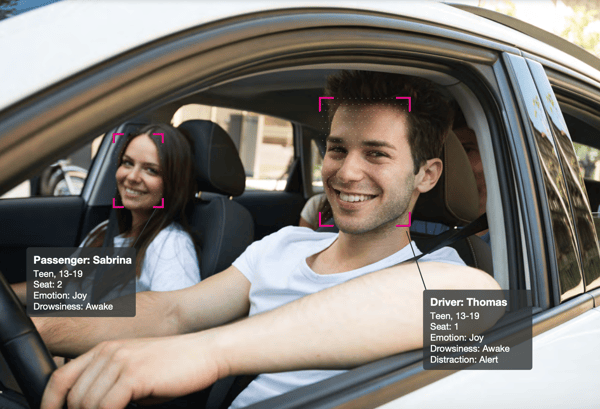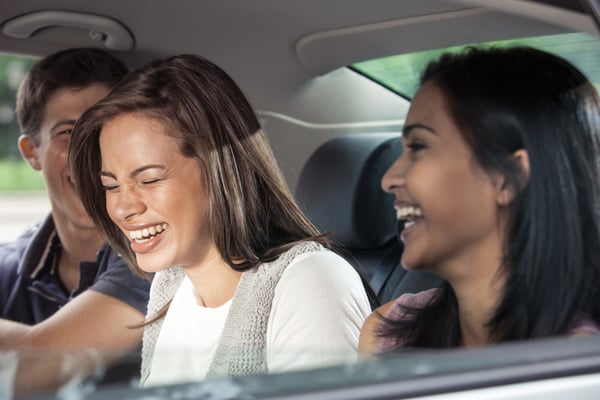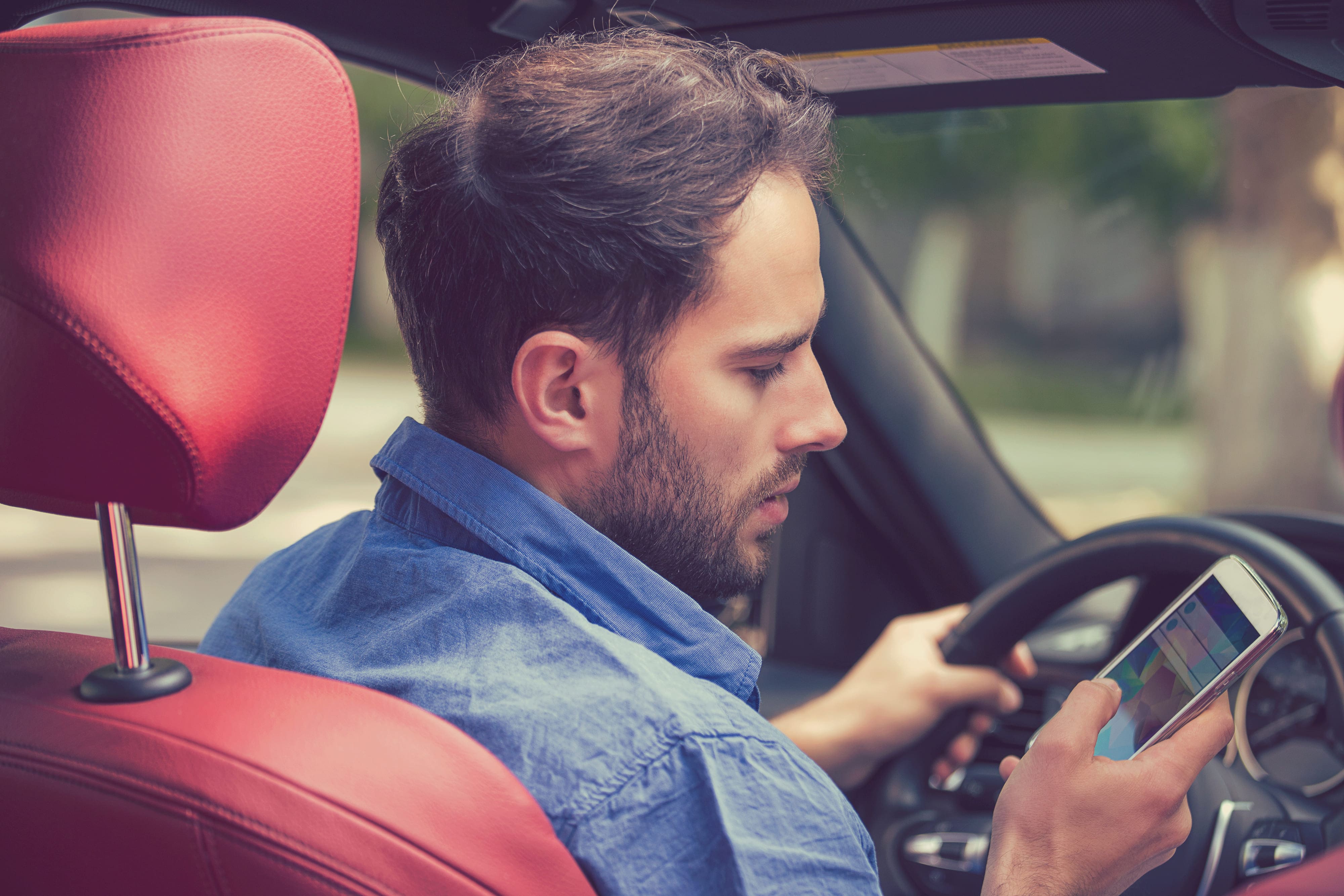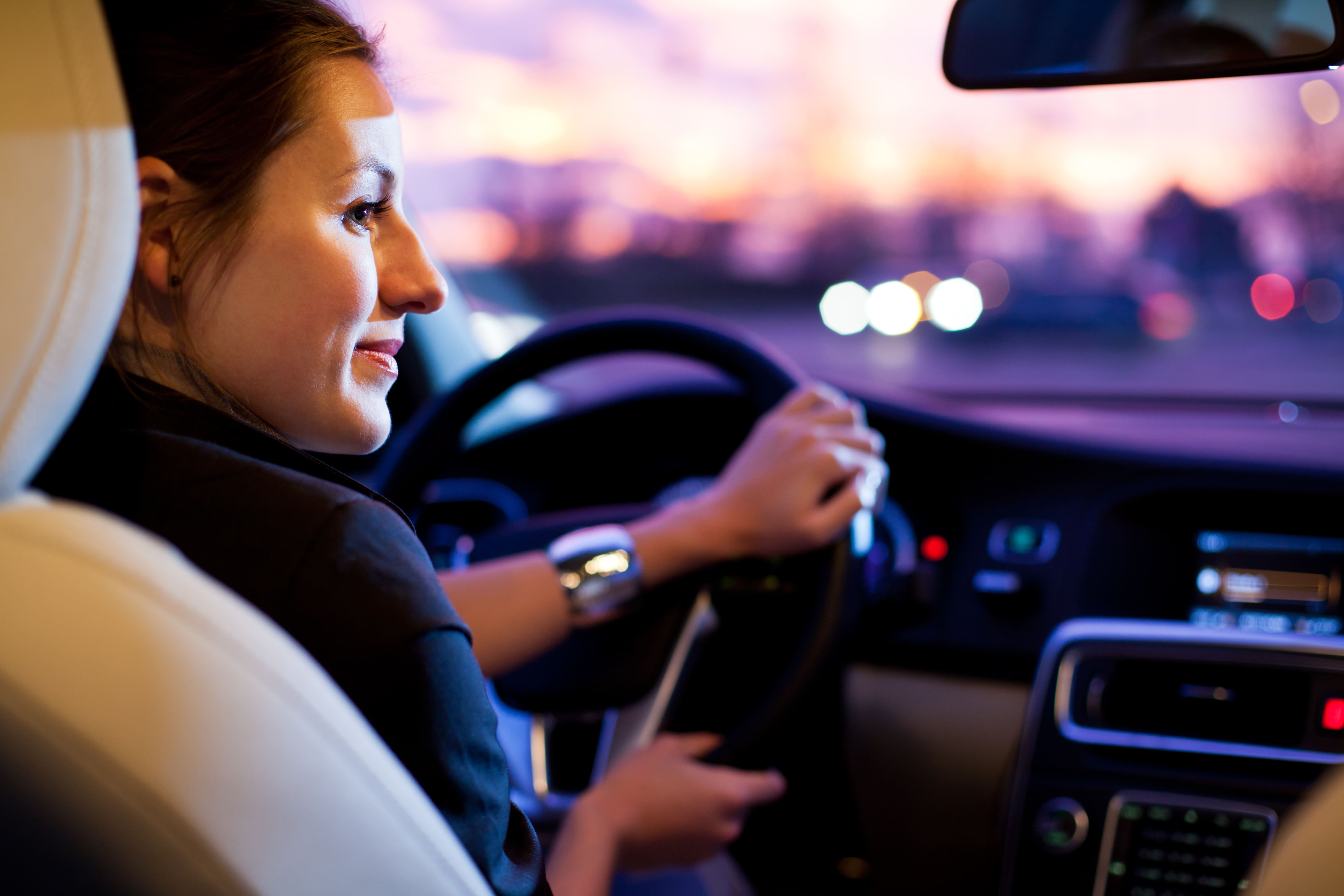Distractions are a major risk for teen drivers. Studies show that texting is the most common risky driving behavior among teens, who are 3 times as likely to look away from the road while using an electronic device. On top of that, the risk of a fatal teen car crash increases for every additional passenger under 21 you add to the car. Parents can’t be along for the ride every time, but In-Cabin Sensing can reinforce good driving habits for them, limiting distractions and keeping teens safe.
What is In-Cabin Sensing?
In-Cabin Sensing gives vehicle systems the insight to inform safety and personalization features. It detects and analyzes:
Driver State
- What is their cognitive state? Are they drowsy? Distracted?
- How are they interacting with passengers and the in-cabin systems?
- Do they have a phone in their hands?
Cabin State
- Are there passengers? How many?
- Are they adults or teens? Where are they sitting?
- Has an item been left behind?
Occupant State
- How are the occupants interacting with the driver, other passengers and the in-cabin systems?
Thomas, 17, just received his full, unrestricted driver’s license. He’s now legally able to have more than one underage passenger in his car, but his parents still limit him to two at a time. Mom and dad use a phone app to keep an eye on in-cabin alerts and make sure he’s practicing good driving habits. Today, Thomas is picking up his best friends Sabrina and David for a ride to the game.
Hit the Road
Everyone’s having a great time! They enter directions in the car's GPS and turn up the music – the In-Cabin System knows to play age-appropriate tracks based on occupant demographics. Along the way, in-cabin sensing:
- Takes a group selfie to record a trip highlight.
- Detects that everyone is in a positive mood so it’s the right time to offers a coupon for discounted snacks at the stadium.
- Detects that the front seat passenger is not wearing her seatbelt. The driver sees an alert and reminds her to buckle up.
A New Passenger
The teens make it to the game safe and sound. While there, they run into another friend who asks for a ride home. Thomas knows that’s against the rules, but he says yes anyway. On the way home, the system:
- Detects that there are now 4 people in the vehicle, and that they are all teens.
- Sends an alert to mom and dad notifying them of this change. They call to check in.
- Detects a phone in the driver’s hand and encourages him to pull over to answer the call – hands-free calling, please! He explains the situation, and mom and dad give their approval.
Rowdy Ride
Back on the road, things are getting loud and rowdy. The music is blasting and everyone’s talking and laughing, which is pulling Thomas’ focus away from the road. The system:
- Detects that the passengers are frequently interacting with - and distracting - the driver.
- Sends a series of escalating alerts reminding the driver to keep his eyes on the road.
- Turns the music volume down.
- Sends a full report of the trip to mom and dad’s mobile app, flagging unsafe events or rules violations for later review.
Life Lessons, Learned
Today's teen driving experiences are different than those of their parents. New drivers have to contend with many more distractions, so parents know it’s harder than ever to keep kids safe and focused on the road. In-Cabin Sensing can identify points of distraction to both alert the driver and provide post-trip reports that parents can use to reinforce positive driving habits, making for safer, drama-free rides in the future.
Read more about In-Cabin Sensing here to explore more use cases (including downloading the teen driver example above as an infographic).









